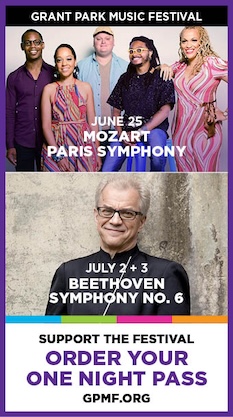Newberry Consort marks the season with festive Mexican baroque program
Local classical music buffs in search of a respite from the same-old holiday menu of caroling choristers and dancing sugarplums would do well to investigate the unusual and flavorsome yuletide program the Newberry Consort is presenting this weekend at churches in Chicago and Evanston.
A choir of women’s voices under Consort co-director Ellen Hargis was joined by musicians from EnsAmble Ad-Hoc, an instrumental group based in Colombia that specializes in Latin-American and Spanish early music, led by Francy Acosta and Jose Luis Posada. The program, which played to a full house Friday night at St. Clement Church in Lincoln Park, recreated a typical Nativity celebration of sacred and secular music as it might have occurred inside the famed Convent of Our Lady of the Incarnation and outside at the plaza, in 16th century Mexico City.
Famed for the high quality of its music-making, the convent flourished from its establishment in the early 16th century until its dissolution in the 19th century. From within the cloistered walls issued the sounds of masses and motets sung by the nuns. The solemnity of those classical pieces stood in stark contrast with the lively and colorful villancicos – traditional dances and songs sung in the vernacular and played on the nearby public square by street bands of folk instruments during the Christmas season.
Newberry Consort members actually did witness this kind of “aural salad” during a visit to Durango, Mexico, according to Hargis’s program note. She and her husband, co-director David Douglass (who is playing violin for this program along with violinist Brandi Berry) researched and edited the program contents, drawing the choral portions from six rare Mexican choirbooks from the Incarnation convent that are housed in the Newberry Library (an invaluable resource the Consort has plundered on several occasions).
One thing the program—“A Mexican Christmas: Angels in the Convent, Dancing in the Streets,” presented by more than 30 singers and instrumentalists – makes clear is the fine stylistic line separating Christmas music of “churchly” praise and celebration and “street music” of similar intent. That line is blurred altogether in the nine villancicos the Newberry members and friends are featuring alongside choral settings that include a Missa Bone Voluntatis by Spanish composer Mateo Romero whose five serene sections function as a framing device for the program.
Villancicos could be both popular and religious (sung during matins of the feasts of the Catholic calendar), their juxtaposition of the sacred and profane, high and low, no doubt accounting for their mass popularity throughout New Spain.
One of the choicest of the villancicos surely known to the nuns of Incarnation is Voces, las de la capilla, a devotional piece by Mexican composer and choirmaster Juan Gutierrez de Padilla (considered the first great New World composer) that depicts the newborn Jesus as both singer and song. Hargis’s chamber choir was especially good at enunciating the Spanish text crisply for the fast verses, no easy task given the reverberant church acoustic.
Just when your ears welcomed an aural departure from the pure tones floated by the women’s voices from behind the church altar – lovely as was their singing – the instrumentalists spiced things up with a brace of villancicos and other short pieces on Christmas themes. These works typically incorporate dialects and complex, highly charged rhythms (especially hemiolas of two against three beats) indigenous to Afro-Caribbean and other ethnic populations in Latin America.
Thus we heard the Mexican composer Antonio de Salazar’s catchy and charming Tarara, whose verses depict a black mill worker singing the praises of the newborn Christ in regional Spanish dialect. The Portuguese-born Mexican composer Gaspar Fernandez was represented by a joyous little villancico lullaby for the Christ child, also for voices and instruments, sung in Spanish and Nahuatl, the Aztec language of Mexico.
There wasn’t a weak or ill-chosen work on the program. Indeed, Friday’s expert performances suggested that, rather than mere pale imitations of their European models, these baroque choral-instrumental pieces from New Spain have something distinctive to say, and the craftsmanship to back up their originality.
Adding to the appeal of this unfamiliar fare were the various folk instruments augmenting a basic ensemble of violins, harp, vihuela (baroque guitar) and lute – including such regional percussion as hand drums, castanets and a jawbone. The arrangements were convincing and, like the singing, beautifully realized.
The full ensemble joined at the end of the evening for a rousing fiesta-style piece by Juan Garcia de Zespedes in which the participants sang and swayed, and everybody seemed to be having a great time.
The encores were an arrangement of Silent Night (sung in English and Spanish) and a Latin-American folk song for which the audience was invited to clap along.
The program will be repeated 8 p.m. Saturday at Bond Chapel, University of Chicago, and 3 p.m. Sunday at First United Methodist Church in Evanston. newberryconsort.org; 773-669-7335.
Posted in Uncategorized


